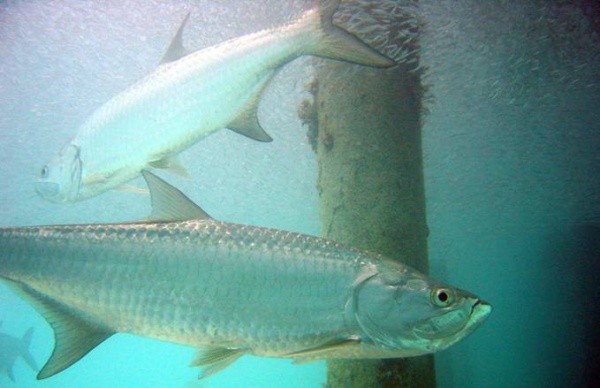Facts About Tarpon
Tarpons are captivating, large fish that belong to the genus Megalops. There are two species of tarpons: the Atlantic tarpon (Megalops atlanticus) and the Indo-Pacific tarpon (Megalops cyprinoides). These are the sole representatives of the Megalopidae family. The Atlantic tarpon is commonly found in the Western Atlantic, the Caribbean, and the Gulf of Mexico. In contrast, the Indo-Pacific tarpon inhabits the waters along the eastern coast of Africa, Southeast Asia, Japan, Australia, and several other regions.
One of the most intriguing aspects of tarpons is their ability to thrive in a variety of water types—saltwater, freshwater, and brackish water. This adaptability is due to their swim bladders, which they use for breathing. They can even gulp air at the surface to gain an extra burst of energy when needed.
In terms of appearance, tarpons are quite striking. They can grow to lengths between 4 and 8 feet and weigh between 60 and 280 pounds. Their bodies are covered in shiny, silvery scales with bluish or greenish backs, and they have large eyes and broad mouths. Tarpons reproduce in warm offshore areas, where females can lay millions of eggs. Their lifecycle is unique, with different developmental stages occurring in varied habitats.
When it comes to their diet, tarpons begin by eating zooplankton and insects but become strictly carnivorous as adults, feeding on fish and other prey. Despite their size, tarpons are not at the top of the food chain; they must watch out for predators like other fish, birds, sharks, crocodiles, and alligators.
One reason tarpons are especially popular among anglers is due to their substantial size, fighting ability, and impressive leaping skills. Many fishing tournaments are dedicated to catching these powerful fish. They have an extensive range, even migrating through the Panama Canal to inhabit coastal waters in the Atlantic and beyond.
Tarpons prefer warmer waters, ideally between 72 to 82 degrees Fahrenheit. If the temperature drops below 60 degrees, they become inactive, and temperatures below 40 degrees can be lethal for them.

 Guyana
Guyana